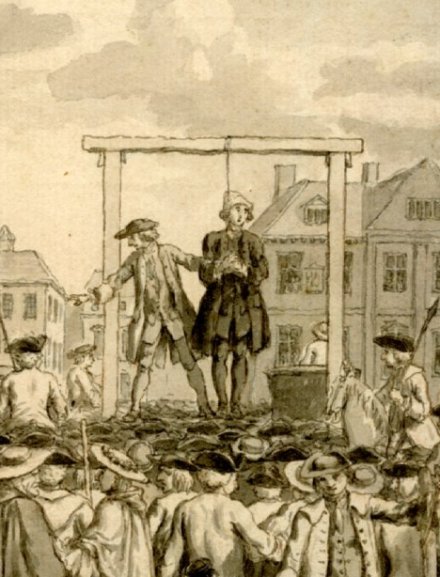
In 1542, England passed the first modern bankruptcy law (known as “Statute of Bankrupts”) during the reign of that lovable old curmudgeon, Henry VIII. The law’s purpose? Make sure no one could ever fail to pay back a loan without severe consequences. In other words, only one social purpose was served: repayment of creditors—or else.
Although several American colonies and later states experimented with a more rational and humane approach, the new English law was during a time when bankruptcy was punishable by death.
Bankruptcy Law of 1841

It wasn’t until 1841 that the USA and other nations passed a bankruptcy law whose intent included an equitable system for discharge of debt. Although England did begin to allow discharge in 1705, the central purpose was still relief for creditors; in no way did the law reflect any humanitarian concern or even sound social policy regarding debtors.
The 1841 bankruptcy law was short-lived, but both the federal government and individual states kept experimenting with variations periodically. Finally, following the catastrophic Depression of the mid-1890s, a modern federal bankruptcy law was passed in 1898, and there’s been one additional law passed ever since.
In a way, that’s surprising; 114 years is a long time for laws to survive without serious opposition and with the same basic premise. Obviously, it is the “common sense” of our nation that society benefits from allowing individuals to get a fresh start, rather than spend the rest of their lives paying off creditors.
How This Has Affected the U.S.
It’s even more surprising (in retrospect) that it took an entrepreneurial nation like ours more than a century before finally putting the law in place. After all, the United States is built on the idea of encouraging individual risk (i.e., experimentation) in launching businesses with the sober knowledge that a majority of new small businesses fail. Without bankruptcy laws, far fewer Americans would be willing to take the risks and invest the personal savings that, combined, have given us the most dynamic and innovative business environment in history.
And even with respect to those who have no entrepreneurial talent, the existence of the bankruptcy code benefits society as a whole. Think about it: how motivated would individual workers be if (due to some financial disaster) they had to spend the rest of their lives working only to hand the paycheck over to creditors? That’s far worse than even indentured servitude, which was limited to periods of about 7 years. We value an incentivized work force because it’s more productive, healthier and psychologically than the alternative.
Bankruptcy In Terms of Mortgage
In this respect, consider the recent housing bubble and the cataclysm of September 2008 through March 2009. Without the option of bankruptcy, people would be stuck paying off their underwater mortgages possibly for the rest of their lives, even though they might have moved out of their homes. An entire generation of productive citizens would be reduced to conduits for the transfer of paychecks to creditors. Instead, all of us benefit by allowing these people a way out to motivate them to remain in a productive workforce.
Obviously, we’ve come a long way since Henry VIII. But to sentence the risk-taking part of the workforce to a lifetime of mindless, motivation-less labor with no inspiration and innovation, effectively decapitates the economy. Fortunately, a lot of congressmen in 1898 had a good head on their shoulders and regarding debtors, our nation no longer has collectively lost its mind.
Contact a Bankruptcy Attorney
Were you steered to this blog post because of bankruptcy challenge in your life? Mlnarik Law has a team of expert attorneys who specialize in bankruptcy Chapters 7, 11, and 13. Visit our Bankruptcy Services page or contact us by phone (408) 919-0088.